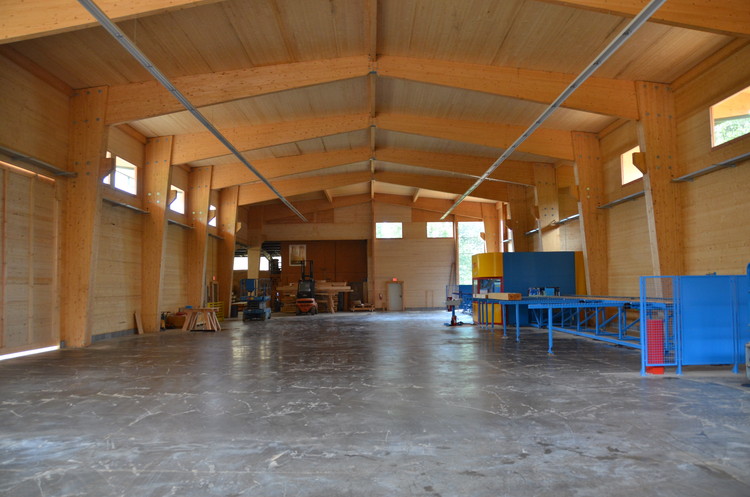독일 놀이터 디자이너가 말하는 '놀이의 가능성'
공유자적2-5월23일 귄터 벨찌히 초청 강연 현장

귄터 벨찌히가 디자인한 놀이터
“어린이들이 옛날과는 다르다고요? 바뀐 건 어린이가 아니라 그들을 둘러싼 세상, 우리의 환경입니다.”
지난 5월 23일 서울시 사회적경제지원센터 스페이스류는 사람들로 가득 찼습니다. 동시에 복도 건너 공간인 ‘서로배움터’에는 아이들이 가득 찼습니다. ‘아이돌봄’ 서비스를 제공한 이날 행사에 엄마들이 많이 찾와왔기 때문이었습니다.
이 행사는 바로 독일의 저명한 놀이터 디자이너 귄터 벨찌히(73) 초청 강연 ‘공유자적2-놀이의 가능성’이었습니다.
생소한 곳에서 순차통역으로 강연하는 어려움 때문인지 벨찌히씨는 “나는 나이 든 사람입니다(I'm an old man)”는 말을 여러 번 했는데요. 그러나 한참 나이 어린 참석자들이 그가 전하는 ‘어린이들의 관점’에 놀라곤 했다는 점에서 누가 ‘올드’한 것인지 알 수 없어지기도 했습니다.
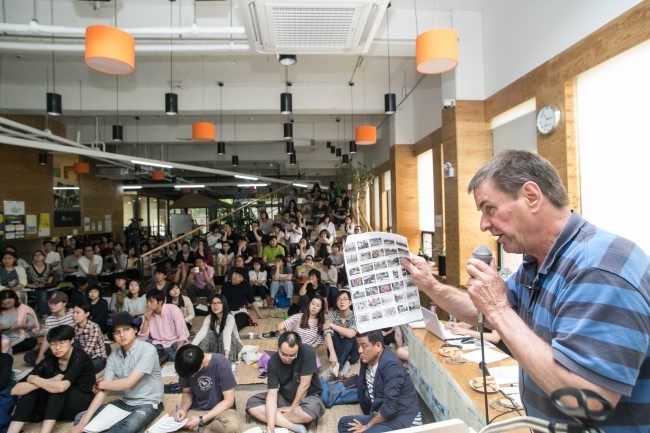

"어린이를 안다고요? 틀렸습니다"
“저는 어린이를 위한 놀이터를 만드는 사람입니다. 때문에 늘 어린이들의 욕구를 관찰합니다. 그 욕구는 바로 ‘놀 공간’이 필요하다는 것입니다.”
벨찌히씨는 ‘어린이’에 대해 설명하기 전 한 가지 주의를 줬습니다. “다들 자신도 어린이였던 시절이 있기 때문에 어린이에 대해서는 잘 안다고 생각합니다. 그러나 그것은 틀린 생각입니다. 당신은 어린이를 잘 모릅니다. 어릴 때 기억을 그대로 간직하는 것이 아니기 때문입니다. 기억은 각색되고 바뀌기 때문에 지금 당신이 어린이의 요구가 뭔지 잘 안다고 말하는 것은 잘못된 일입니다.”
그는 또한, 요즘 어른들이 “우리 때는 안 그랬는데 요즘 애들은 이래”라고 하는 말에 대해서도 “과연?”이라는 질문을 던졌습니다.
“10년 전만 해도 컴퓨터가 없었는데 요즘 아이들은 능숙하게 가지고 놀지요. 그렇다면 아이들이 바뀐 것입니까? 아니요. 아이들은 그대로입니다. 주변 환경이 바뀐 것이지요.”
“10년 전만 해도 컴퓨터가 없었는데 요즘 아이들은 능숙하게 가지고 놀지요. 그렇다면 아이들이 바뀐 것입니까? 아니요. 아이들은 그대로입니다. 주변 환경이 바뀐 것이지요.”
"아이들은 스스로 위험을 판단한다"
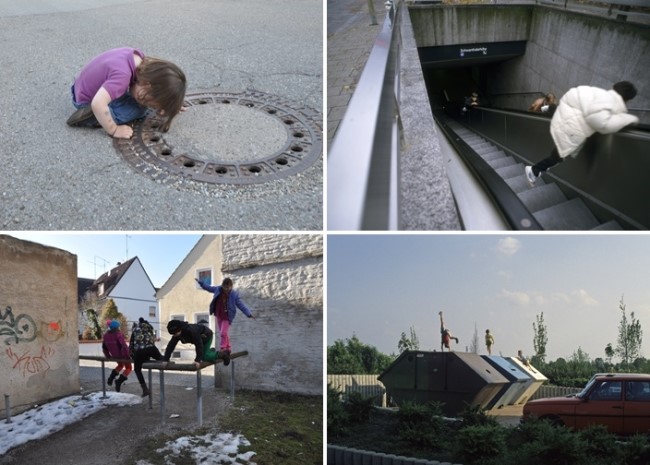

그는 어린이들에 대해 “자기들이 놀 장소를 스스로 찾아낸다”, “쉬운 길로 가지 않고 항상 좀 더 어렵게, 힘들게 노는 방법을 찾는다”, “장애물을 굳이 찾아가 뛰어 넘는다”는 등의 특징을 설명했습니다.
아이들이 위험하게 놀고 있는 장면의 사진을 보여주면서 “어른들로서는 심장마비가 올 듯하겠지만 아이들은 실제로 그렇게 위험하지 않다”고도 했습니다.
“아이들은 스스로 경험하면서 위험을 판단합니다. 너무 높이 올라갔다 싶으면 스스로 내려오고, 들어 보고 무거우면 내려놓습니다. 그런데 어른들은 떨어지지 말아라, 넘어지지 말아라 잔소리를 합니다. 이것은 아이들을 ‘놀지 못 하게 하는 것’입니다.”
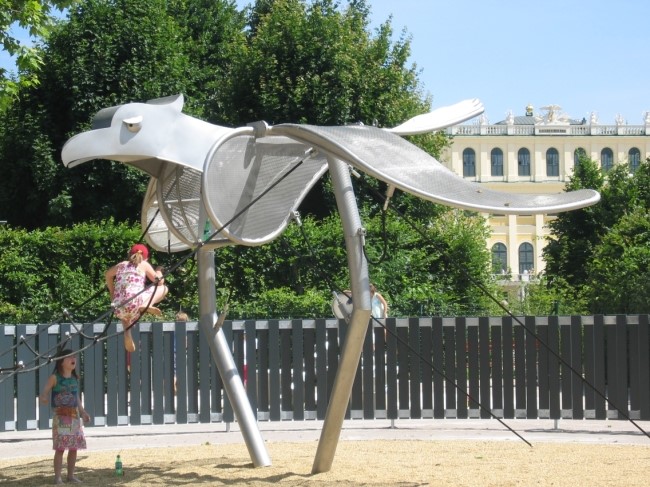
귄터 벨찌히가 디자인한 놀이터
벨찌히씨가 한 말 중에서 가장 참가자들을 놀라게 한 말은 이것이었습니다. “어른들은 아이들이 놀고 있는 모습을 지켜보지 말아야 한다”는 것입니다.
놀이터에 가서 지켜보는 것으로 모자라서 CCTV 화면을 각 가정의 TV로 전송받아 보는 한국 사회에서는 이해하기 어려운 말일 수밖에 없는데요. 벨찌히씨는 “위험한지 아닌지는 눈으로 봐야 알 수 있는 것이 아니고 멀리서 소리를 듣고서도 판단할 수 있다”고 말했습니다.
아이들에게 '비밀스런 공간'을 허하라
이 점을 강조한 이유는, 놀이터에는 ‘비밀스러운 놀이’를 할 수 있는 공간이 있어야 한다는 그의 철학 때문입니다.
실제로 그가 디자인한 놀이터는 어른들의 시야를 차단하는 형태가 많습니다. 그런 공간들 안에서 스스로 결정권을 가질 때 아이들은 비로소 재미있게 놀 수 있다는 것이 그의 설명입니다.
실제로 그가 디자인한 놀이터는 어른들의 시야를 차단하는 형태가 많습니다. 그런 공간들 안에서 스스로 결정권을 가질 때 아이들은 비로소 재미있게 놀 수 있다는 것이 그의 설명입니다.
한편, 놀이기구, 환상적이고 멋진 놀이기구들에 대해서 그는 회의적인 의견을 보였습니다. “아이들은 놀이기구를 원할까요? 잠깐 동안은 그럴지 모르지만 아이들은 곧 다른 구석에 가서 놀게 됩니다. 놀이기구를 원하는 것은 엄마들이지요.”
한편, 놀이기구, 환상적이고 멋진 놀이기구들에 대해서 그는 회의적인 의견을 보였습니다. “아이들은 놀이기구를 원할까요? 잠깐 동안은 그럴지 모르지만 아이들은 곧 다른 구석에 가서 놀게 됩니다. 놀이기구를 원하는 것은 엄마들이지요.”


그가 보여준 몇 장의 사진들은 우리의 고정관념을 잘 일깨워줍니다. 폐차 안에 들어가서 노는 아이들 사진을 보여 주면서는 이렇게 말했습니다. “이 아이들이 차를 부쉈다고 생각하십니까? 아이들은 기물파손을 하지 않아요. 부수는 것은 어른들이지요. 아이들은 그 안에 들어가서 상상의 나래를 펴고, 신나게 놀고 있을 뿐입니다.”
반면 나무로 만든 자동차, 우리 주위에서도 종종 볼 수 있는 탈것 장난감에 대해서 그는 신랄하게 비판했습니다. “이 얼마나 어리석은 모습입니까? 아이들이 자동차를 좋아한다고 이런 것을 만들어 주다니요! 이건 아이들에게 거짓말을 하는 것입니다. 누가 봐도 이건 자동차가 아니니까요. 제 평생 나무로 만든 이런 차를 가지고 즐겁게 노는 아이들을 본 적이 없습니다.”
상상의 나래 펴주는 놀이터가 좋은 놀이터
귄터 벨찌히씨는 실제로 놀이터를 만들 때 전형적인 놀이기구들을 피합니다. 한 사진에서 보여 준 놀이터는 언덕 아래 묻혀 있는 콘크리트 배수관을 그대로 활용하고 있습니다. “이 안에 들어가서 놀면 은밀하고 아늑한 느낌, 비와 흙과 풀냄새로 얼마나 좋은지 모릅니다.”


또 로마 유적처럼 보이는, 낡은 벽들이 늘어선 공간을 보여주면서 “가장 좋은 놀이터”라고 말하기도 했습니다. 이는 아이들이 상상하면서 놀기에 가장 좋다는 뜻인데요. 엄마들의 반응은 좋지 않다고 합니다. “여기는 놀이터가 아니야. 저쪽에 진짜 놀이터로 가자”고 한다는 것입니다.
이밖에도 그가 설계한 놀이터들은 플라스틱보다는 바위, 조약돌, 나무를 주로 사용해 자연에 가까고, 그런 한편 꽤 위험하기도 합니다. 높이가 아찔한 놀이터들 사진도 보이는데요. 2~3m 높이는 돼 보이는 곳에 설치된 구름다리는 놀랍게도 휠체어가 지날 수 있도록 만들어진 것입니다. “장애를 가진 아이들이 이런 곳을 경험할 기회가 별로 없기 때문에 무척 즐거워하며 논다”고 그는 설명했습니다.


"장애아만 따로 노는 놀이터 필요없다"
장애를 가진 아이도 즐겁게 놀 수 있는 놀이터들을 그는 좀 더 소개했습니다. 물 위에 설치돼 출렁임을 즐길 수 있는 구조물, 휠체어가 들어갈 수 있는 회전놀이기구 등입니다. 다만 그는 “장애인만 따로 놀 수 있는 놀이터는 필요 없다”고 말합니다. 장애아에게 즐거운 놀이터는 다른 아이들에게도, 심지어 어른에게도 재미있는 곳이므로 모두가 함께 놀 수 있는 공간에 설치하는 것이 더 좋다는 것입니다.
한 플라스틱 회전놀이기구 사진을 보여주면서는 이렇게 설명했습니다. “이것은 원래 장애아를 위한 것이 아닙니다. 엄마가 이 아이를 안아서 여기 앉혔고, 아이가 회전을 즐기는 것을 보면서 아주 행복해 했습니다.”
한국 놀이터는? "감옥 같다" 평가
이쯤에서 한 가지 궁금증이 일 만합니다. 벨찌히 씨는 한국에 와서 놀이터를 보고 어떤 느낌을 받았을까요? 그 반응은 생각보다도 훨씬 부정적이었습니다. “바보 같다”, “감옥처럼 보인다”고 할 정도였습니다.


“한국 놀이터를 보고 아주 충격을 받았습니다. 여름 날씨는 그렇게 더운데 왜 놀이기구는 다 플라스틱입니까? 아이들보고 어떻게 놀라고요? 햇볕도 뜨거울 텐데 왜 그늘이 하나도 없지요? 어딜 가나 놀이터가 똑같다는 것도 문제입니다. 중앙에 비슷비슷한 놀이기구 하나가 떡하니 들어서 있더군요. 아이들보다는 엄마들을 위한 공간일 뿐입니다.”
그는 한국의 놀이터가 이처럼 천편일률적인 이유를 “미국의 영향을 받았기 때문”이라면서 “한국은 5000년의 역사를 가지고 있으면서 왜 200년밖에 안 된 미국의 실패한, ‘거지같은’ 놀이터를 모방하고 있습니까?”라고 일갈했습니다.
아울러 “한국적인 공간을 보면 나무와 돌 등 자연적인 사물을 잘 이용하고 있는데 놀이터에도 이런 양식이 적용되면 좋을 것이고, 아이들에게 한국적인 문화를 자랑스럽게 생각할 수 있는 놀이터를 만들어주기 바란다”고 당부했습니다.
어른들 위한 놀이터? "놀이는 어린이 몫"


이어진 질문 시간에는 시간이 모자랄 정도로 많은 질문이 쏟아졌습니다. 그 만큼 놀이 공간에 대한 관심이 높기도 하고, 벨찌히씨의 강연을 듣고 떠오른 의문들도 많았다는 뜻일 것입니다.
한 시민은 ‘노인 세대와 아이들이 함께 시간을 보낼 수 있는 공간’으로서의 놀이터의 가능성에 대해 물었습니다. 이에 대해 벨찌히씨는 부정적인 의견으로 답했습니다.
“나이든 사람과 아이들이 있으면 늘 가르치려고 듭니다. 가르친다는 것은 ‘나는 알고, 너는 모른다’는 것입니다. 이런 구도 속에서 아이들은 자유롭게 놀 수 없습니다. 아이들이 놀 때는 어른들 없이 아이들끼리 놀아야 합니다.”
“나이든 사람과 아이들이 있으면 늘 가르치려고 듭니다. 가르친다는 것은 ‘나는 알고, 너는 모른다’는 것입니다. 이런 구도 속에서 아이들은 자유롭게 놀 수 없습니다. 아이들이 놀 때는 어른들 없이 아이들끼리 놀아야 합니다.”
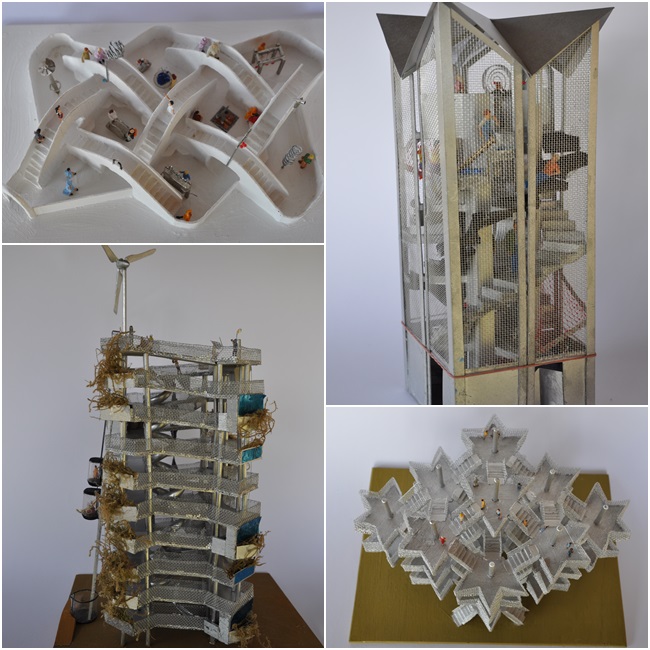

귄터 벨찌히가 만든 놀이터 모형
‘어른들을 위한 놀이터’를 구상하고 있다면서 의견을 물은 한 문화기획자에게도 벨찌히씨의 답변은 깐깐했습니다.
“놀이는 어린이들의 전유물입니다. 어린이들은 호기심이 있고, 노는 자체에서 배우기 때문입니다. 반면 어른들이 뭔가를 한다면 이미 목적이 존재하지요. 어른들을 위한 공간에서 어른들이 하는 활동은 놀이라기보다는 운동에 가까울 것입니다.”
“놀이는 어린이들의 전유물입니다. 어린이들은 호기심이 있고, 노는 자체에서 배우기 때문입니다. 반면 어른들이 뭔가를 한다면 이미 목적이 존재하지요. 어른들을 위한 공간에서 어른들이 하는 활동은 놀이라기보다는 운동에 가까울 것입니다.”
어린이의 관점에서 생각한다는 것은?
이 같은 설명을 통해 벨찌히씨가 한결같이 강조한 것은 “어린이의 관점에서 생각하라”는 것이었습니다. 방과 후 학원으로만 내모는 부모들 못지않게, 좋은 놀이터를 만들어주고자 한 어른들조차도 어린이의 눈이 아닌 어른들의 눈으로만 공간을 바라고보 있었던 게 아닌가, 돌아보게 하는 강연이었습니다.


서울시 마을공동체종합지원센터, 사회적경제지원센터, 청년일자리허브, 인생이모작지원센터 등이 위치하고 있는 서울혁신파크는 앞으로도 시민들이 행복해지는 공간, 공동체가 살아나는 공간, 사회적경제와 청년들이 새로운 활동을 시작할 수 있는 공간이 될 수 있도록 연구와 고민을 계속해 나갈 예정입니다.
세 번째 공유자적 행사로 6월 중에 다시 찾아뵙겠습니다!
세 번째 공유자적 행사로 6월 중에 다시 찾아뵙겠습니다!
-글 황세원(서울시 사회적경제지원센터)
-사진 이우기, 귄터 벨찌히 제공
-사진 이우기, 귄터 벨찌히 제공

